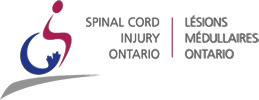When weather conditions are unpredictable, increased demands are placed on a driver and their vehicle. The following winter driving tips should be considered well in advance of the first snowfall, so that all motorists are prepared for the unpredictability Canadian winters often bring. Consider the following:
Vehicle Readiness
Performing a maintenance check-up is critical to winter readiness. Make sure the tires, brakes, oil, lights, exhaust system, heater/defroster and windshield wipers are examined.
Keeping your fuel tank at least half full is recommended. When an emergency situation requires you to remain in your vehicle on days when there is freezing weather, being able to stay warm is critical to your health and safety.
Make sure you have enough windshield washer fluid in your vehicle, and make sure you keep an extra container in case you run out.
Clear all snow and ice from your roof, windows, mirrors and lights. Wait to ensure that all fog is cleared from the inside of your vehicle before putting the car into motion.
Make sure your tires are properly maintained, as tires that are worn or damaged can affect your ability to drive safely. It is important to replace your tires before the tread depth reaches 1.5 mm, as studies have shown that that tires with a tread of 3 mm deep are able to stop a vehicle on wet pavement in 25% shorter distance than a tire with a 1.5 mm tread.
Handling Your Vehicle in Winter Driving
Most collisions that occur during the winter season are a result of drivers travelling too fast for weather conditions. Most important is that drivers slow down, and allow for extra space between your vehicle and other motorists.
Take care to look for reflections on the road, as what looks like water might actually be ice. Be especially careful as you approach shaded areas, bridges and overpasses, as these areas of road freeze faster and stay frozen for longer periods of time. Make sure to steer gently in slippery conditions, and avoid quick acceleration and hard breaking which may cause your vehicle to skid. A skid occurs when a vehicle loses traction over a slippery surface. If your vehicle is skidding, release your breaks and steer in the direction of the skid. Make sure not to over-steer.
Also, avoid using cruise control in slippery weather conditions, as this function reduces overall reaction time and vehicle control.
Finally, never pass a snow plow. Accidents that occur between motorists and snow plows have resulted in many fatalities. Passing between or around snow plows is very dangerous due to whiteout conditions and the ridge of snow being passed between plows. Be sure to maintain a safe distance from snow plows when you see their blue flashing lights.
Be Prepared
Finally, it is important to be prepared with emergency supplies in case you find yourself needing them. Make sure you have a charged cell phone in your vehicle, along with non-perishable food, water, a flashlight, blankets, warm clothes and jumper cables.
Be sure to check weather and travel conditions before getting into your vehicle. Plan extra travelling time, and consider delaying your travel if weather conditions are bad. Stay safe this winter and be road ready!
Visit http://www.mto.gov.on.ca/english/ontario-511/pdfs/winter-safe-driving.pdf for more information around safety practices and winter driving.







